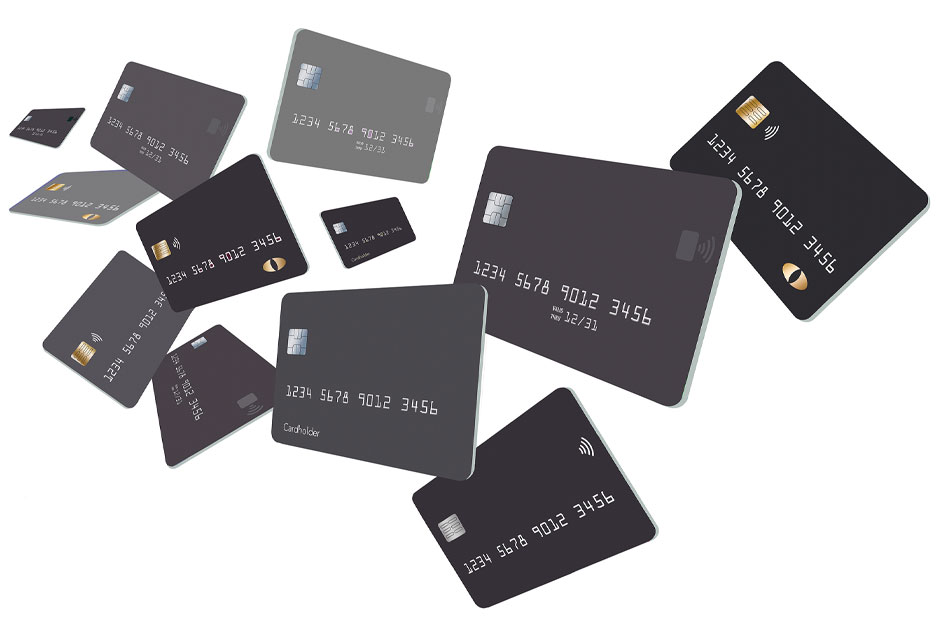Credit cards… a blessing or a curse? Sometimes maybe a little of both!
Either way, the ability to establish and build credit is important for anyone living in the United States. When you establish a credit history and subsequently receive a credit score, it shows lenders that you are financially responsible and makes you eligible for major purchases like cars, homes, and low interest credit cards.
It may seem unbelievable today, but it wasn’t until 1974 that women were allowed to apply for and own a credit card in their own name. Before that, they could only have a credit card if their husband authorized it. WOW! We have sure come a long way!
The Invention of Credit
The idea of credit can be traced back at least 5,000 years ago to Mesopotamia, where there is evidence of transactions between merchants who issued the earliest-known forms of an I.O.U for their goods.
Fast forward to modern times, and Diners Club was the first widely known charge card, created by Frank McNamara in 1950 after he left his wallet at home while dining out. He and partner Ralph Schneider launched the first Diners Club card which allowed the cardholder to charge their meal. In its first year of operation, Diners Club grew to more than 10,000 members and included 28 restaurants and two hotels that would accept payments from their elite clientele.
American Express debuted its first charge card in 1958. Merchants who accepted the card would pay American Express a percentage of the amount being charged.
That same year, Bank of America, based in California, took credit to a new level when they created the BankAmericard which they sent out to 60,000 customers in Fresno with a $300 credit limit, and later rolled out state-wide by 1966. No credit application needed! This first attempt ended up being a costly error in judgment, with delinquency rates over 20% and rampant fraud.
This was the first credit card that introduced revolving credit and allowed its cardholders to carry a balance from month to month. It was a big hit with families who needed convenient extra cash they could pay back a little at a time. In 1976, BankAmericard changed its name to Visa.
Also in 1966, a group of California banks formed the Interbank Card Association (ITC), which would soon issue the nation’s second major bank card, Mastercard.
Regulation and Litigation
As the popularity of credit cards increased in the 1970s, so did legislation aimed at addressing consumer complaints against this fast-growing industry. This regulatory legislation included:
- The Fair Credit Reporting Act of 1970 restricting the collection and use of credit report data.
- The Unsolicited Credit Card Act of 1970 prohibiting issuers from sending active cards to customers who hadn’t requested them.
- The Fair Credit Billing Act of 1974 amending the Truth in Lending Act to rein in abusive billing practices and enabling consumers to dispute billing errors.
- The Equal Credit Opportunity Act, also in 1974, was passed to prevent lenders from discriminating against any applicant based on gender, race, marital status, national origin, or religion.
- The Fair Debt Collection Practices Act of 1977 amended the Consumer Credit Protection Act to prohibit predatory debt collection practices and rework the debtor’s bill of rights.
Technical Innovation
An important innovation in credit card technology was developed when an IBM engineer named Forrest Parry designed a magnetic tape which attached to the back of a credit card so that consumers could have their information “swiped” at a point-of-sale location.
As credit cards became increasingly popular, so did the scammers who found ways to make false charges using other people’s card information. The ease of swiping a card meant thieves could use a card they found or stole.
Safer technology was developed in France in 1984 when microprocessors were embedded into cards allowing them to be read by specialized payment terminals. By 1994, all credit and debit cards in France were using this technology which, combined with a PIN (personal identification number), added extra layers of protection to the payment process.
Other countries followed their lead and developed credit card chip systems. The need for a standardized payment system became a global issue and in 1994 three international payment processors, Europay, MasterCard and Visa began the development of a global chip design for payment systems.
The Future of Credit Cards
What will credit cards look like in 25, 50 or 100 years? Judging by the changes we see around us today, credit card transactions may be increasingly integrated into our lives in new and creative ways. Just as we make purchases with internet-enabled devices from companies like Amazon and Google, maybe we will find ourselves making purchases through our cars and home appliances. The sky’s the limit on credit card technology!



















